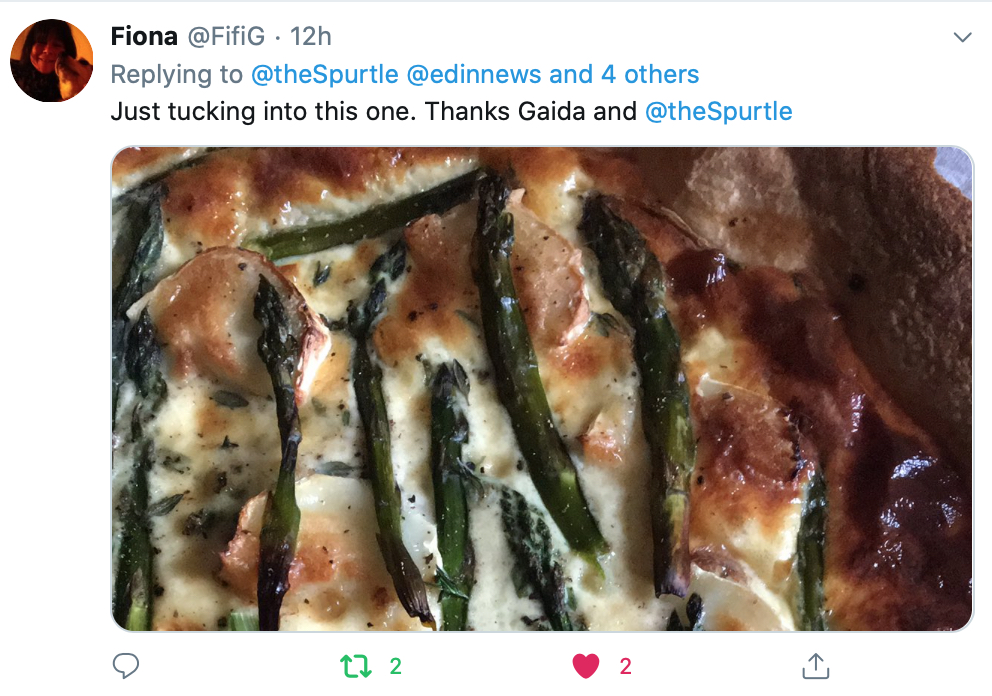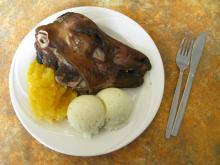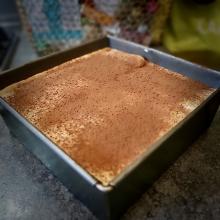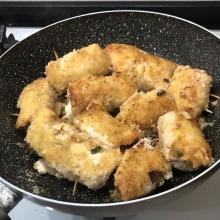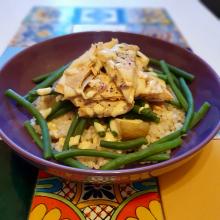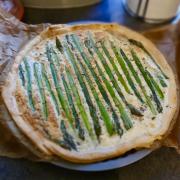
ASPARAGUS, POTATO, AND GOAT'S CHEESE SAVOURY TART
Asparagus is one of my absolute favourite ingredients – as well as being one of the many ingredients I discovered after moving to the UK. Growing up in Italy, we mostly had white asparagus and, in particular, the local variety called Asparago di Bassano. Ten years on, springtime has now become for me synonymous with asparagus, and I really relish the freshness and versatility of this wonder-vegetable.
If you can bear having peculiar-smelling pee for 24 hours, you are certainly trading up by incorporating asparagus in your diet. It has a long list of health benefits including improving digestive health and suppling a considerable amount of nutrients for very few calories.
So, I couldn’t resist sharing this lip-smacking savoury tart recipe with you. It’s an Ode to Spring, which you can serve hot or cold with a spot of salad for lunch or dressed up as a table appetizer for a fancier dinner party.—Giada
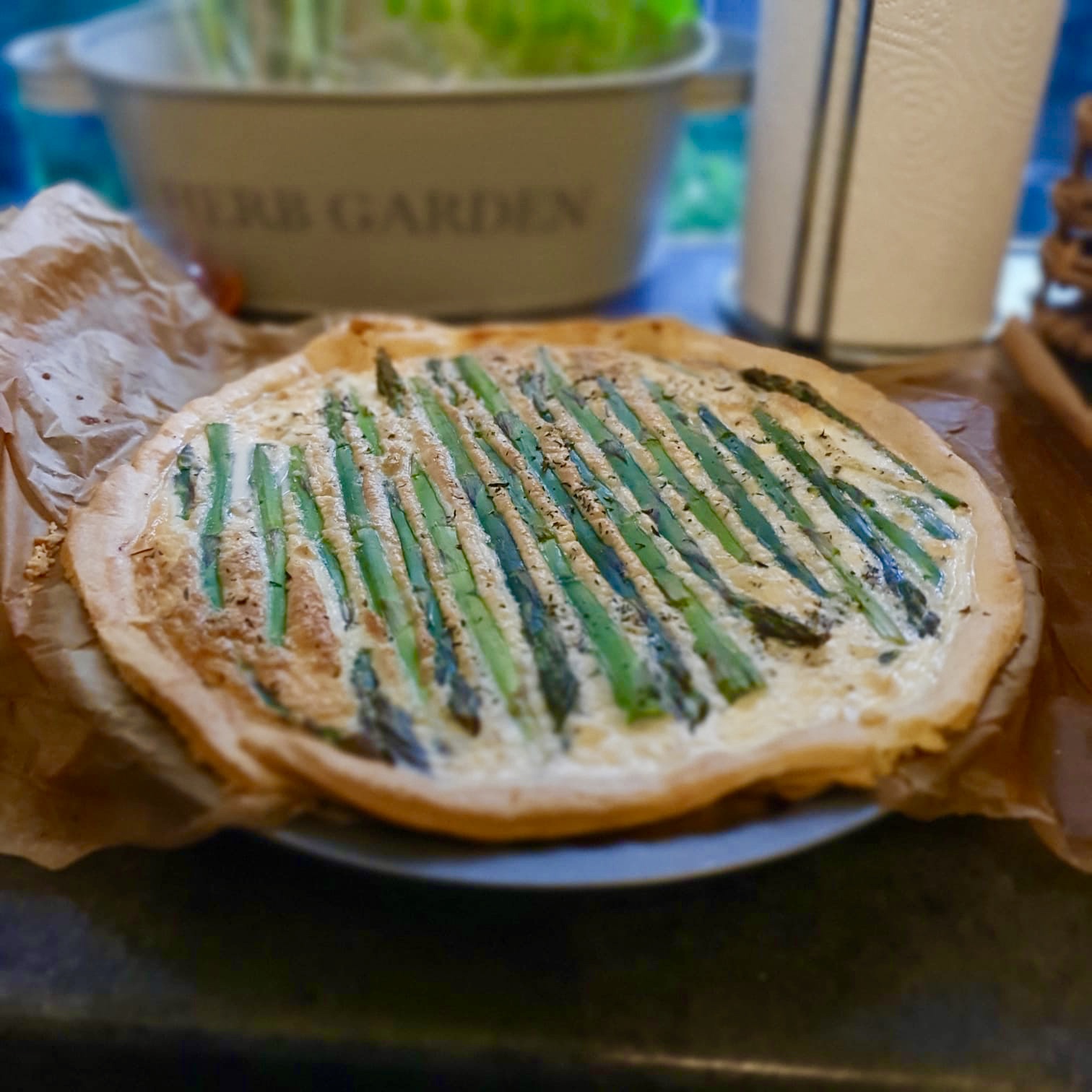

INGREDIENTS
ENOUGH FOR 1 ROUND TART (about 30 cm in diameter)
300g (or one sheet of) shortcrust pastry
Bunch of green asparagus
3 eggs
150ml of cream (I used the soy substitute for lactose intolerance)
150ml of milk (I used unsweetened almond milk)
½ tsp nutmeg
2–3 medium potatoes
70g goat's cheese (semi-soft)
handful of coarse sea salt
drizzle of olive oil
table salt
Optional – sprinkling of thyme to garnish
METHOD
First things first: remember to remove the shortcrust pastry from the fridge about 20 mins before handling it – if the pastry is too cold it will be difficult to shape and will tend to crack. I’ve used ready-rolled pastry for this recipe, but you can also make it from scratch – see ‘Extra tips" below for my recipe.
1.) Pre-heat the oven to 180º C.
2.) Prepare the asparagus by cutting off the hard ends at the bottom. Bring a pot of water to the boil on the hob, add a handful of sea salt, and boil the asparagus on a medium heat for a couple of minutes.
Remove from the pan using a slotted spoon (tipping them out might crush the tips!) and place on a chopping board to cool. Once cooled, slit the asparagus lengthways. Hold back 3–4 and chop into small chunks instead. Set aside.
3.) Peel the potatoes and slice them into thin roundish slices – they need to be able to cook rapidly without breaking apart.
Place a large frying pan on a medium heat and add a drizzle of olive oil. Allow the oil to heat up, making sure you distribute it across the entire surface. Once the oil is hot, add the potato slices, add some salt and a splash of water to avoid them sticking to the pan. Cover with a lid and cook on both sides for roughly 15 mins, adding more water if necessary – cooking times will vary depending on how thick your slices are and what type of potatoes you’ve used. Don't worry if the potatoes aren’t fully cooked as they will cook further in the oven.
4.) Line a round pie dish with baking paper. (I used a loose-bottomed ridged dish, as I find it easier to remove the ring, but any pie dish will do.) Unroll the pastry sheet (or roll out the pastry to measure if you’ve made your own, using a floured rolling pin) and place it over the pie dish. Using your fingers, mould the pastry to the shape of the dish – remember to really press the pastry into the ridges (if using a ridge dish) so as to maximise filling space.
Using a knife, cut off the excess pastry but remember to leave an extra ledge over the top of the sides. The pastry is likely to shrink during cooking, so we can cut off any extra bits once it’s been baked.
5.) You will now need to blind bake your pastry. Using a fork, lightly pierce some holes at the bottom of the pastry layer. Place another layer of baking paper over the pastry and add some baking beans. (TIP: If you don't have baking beans, you can use some actual dried beans.) Place at the centre of the oven for 15 mins.
6.) In the meantime, prepare the filling. In a bowl, whisk together the eggs, cream, milk, nutmeg, and a pinch of salt.
7.) Once the pastry has blind baked, remove from the oven and take out the baking beans using the upper level of baking paper. Use a knife to remove the excess pastry from the sides. Raise the temperature of the oven to 200º C.
Position a layer of potatoes on the pastry; add the chopped asparagus (not the sliced asparagus!) and the chopped bits of goat's cheese. Finally add the egg mixture until it reaches the edge of the dish sides. Use the sliced asparagus to create a design on the top of the tart. Sprinkle a little thyme on top.

8.) Being careful not to tilt the dish, place it in the centre of the oven for 30–40 mins, depending on your oven and on the type of dairy you’ve used. (I noticed that soy cream does not thicken quite as quickly or as much as normal cream.) Once the time is up, your tart might still have a little wobble – this won’t cause any trouble if you let it rest and cool before serving. If the wobble is considerable, extend the cooking time at a reduced temperature (180º C). You can also cover the top of the tart with tinfoil if you don't want your work of art to get too dark.
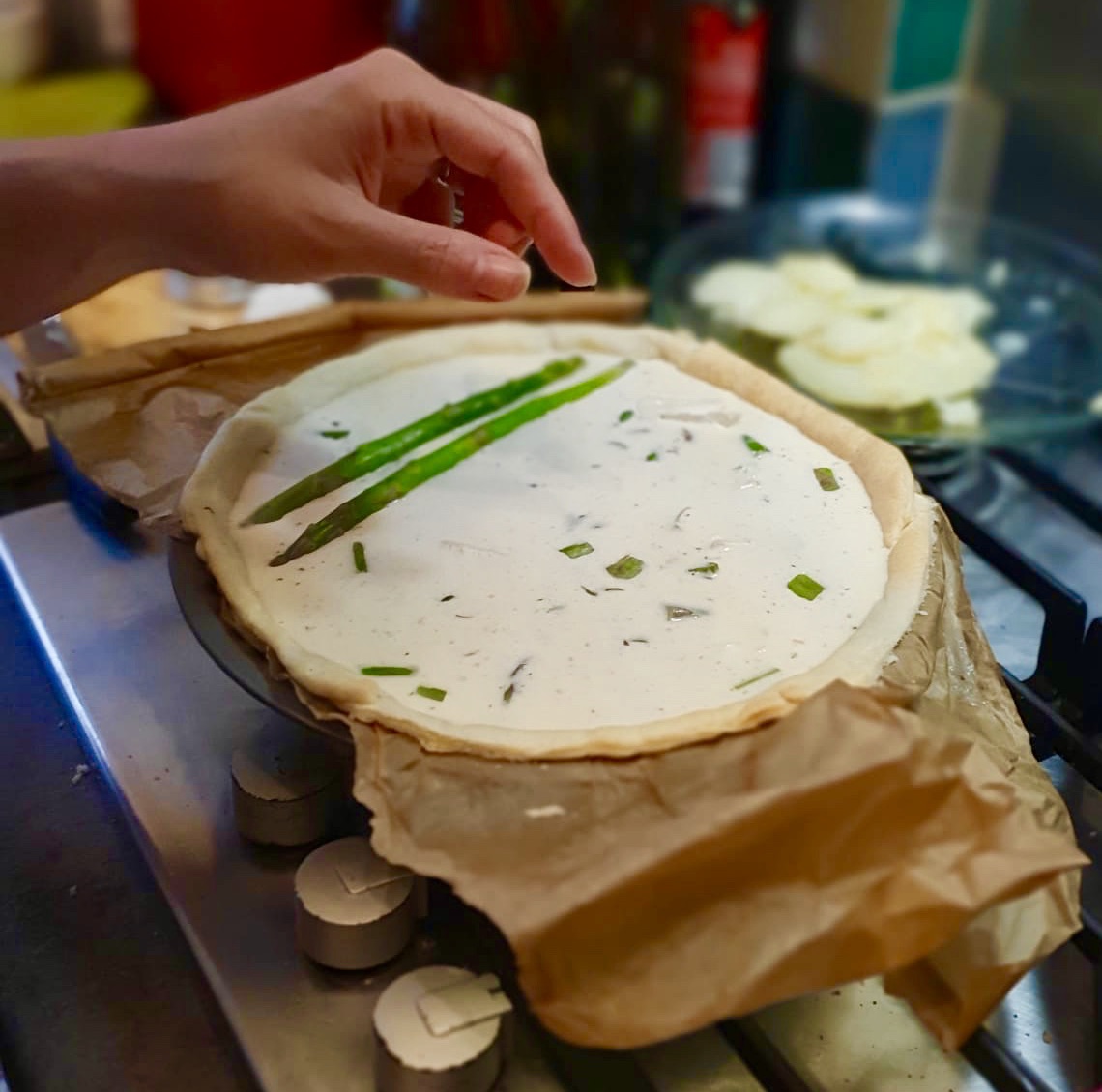
EXTRA TIPS
If you have some extra time, you can also make your own shortcrust pastry from scratch.
INGREDIENTS
250g of plain flour
110g of butter chopped (or dairy-free substitute)
pinch of table salt
2–3 tbsp water
METHOD
1.) Place the flour and salt in a large bowl. Add the butter cubes, and using the tips of your fingers, bind the ingredients together – you will obtain a mixture which resembles breadcrumbs.
2.) Adding water a little at a time, bind the ingredients together. Once the mixture is combined and smooth, shape it into a ball and wrap it in clingfilm. Place it in the fridge to cool for 15–20 mins before using.
For more recipes, visit my food blog HERE. If you end up giving this recipe a go, I would love to see a snap of it. Simply tag @giadasplate on Instagram or send me a DM. Happy cooking and buon appetito!
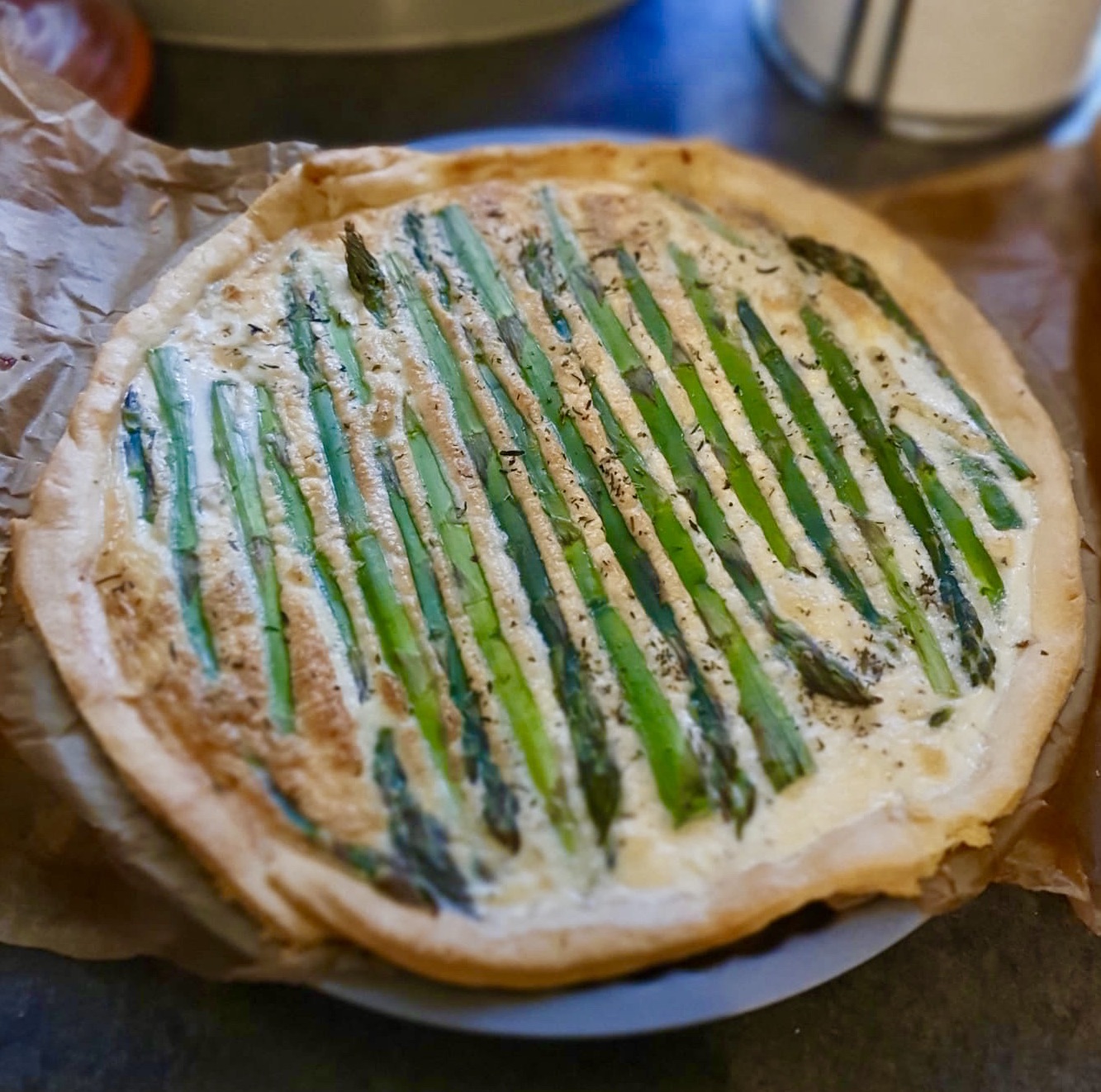
----------
